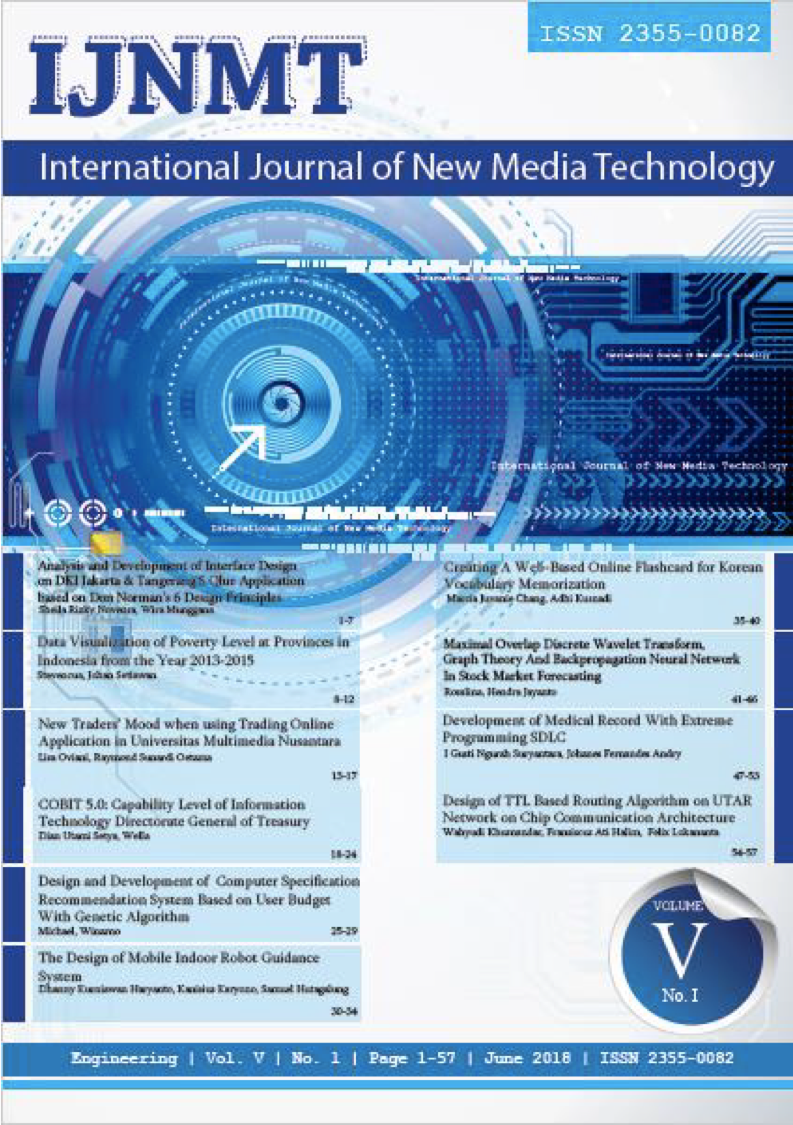The Design of Mobile Indoor Robot Guidance System
DOI:
https://doi.org/10.31937/ijnmt.v5i1.811Abstract
The mobile indoor robot guidance system is a mobile robot which can assist users to find the desired position or location indoor or inside particular shed where Global Position System (GPS) failed to perform. Robot guidance system has many features in order to make the system useful for all of the users. The type of user who can make use of this system is mostly the disabled user and the user which is unfamiliar with the environment or the map. There is also potential usage inside the shopping mall or the big office spaces with the capability of displaying the advertisement during guidance process. This work deploys robot guidance system using geo-magnetic and Wifi methods for Indoor Positioning System (IPS). Although DC motors can generate interference to the magnetic sensor, the proper shields are adequate for the system. The metal shields for the DC motor can minimize the deviation from 6.41n T or about 16.74% for non-shielding motors to 2.86 n T or about 10.56%. Based on this research, mobile indoor robot guidance system can be implemented using various methods of IPS including geo-magnetic.
Index Terms”mobile robot, indoor positioning system (IPS), Wifi multilateration, geo-magnetic positioning, disabled user.
Downloads
Downloads
Published
How to Cite
Issue
Section
License
Authors retain copyright and grant the journal right of first publication with the work simultaneously licensed under a Creative Commons Attribution-ShareAlike International License (CC-BY-SA 4.0) that allows others to share the work with an acknowledgement of the work's authorship and initial publication in this journal.
Authors are able to enter into separate, additional contractual arrangements for the non-exclusive distribution of the journal's published version of the work (e.g., post it to an institutional repository or publish it in a book), with an acknowledgement of its initial publication in this journal.
Copyright without Restrictions
The journal allows the author(s) to hold the copyright without restrictions and will retain publishing rights without restrictions.
The submitted papers are assumed to contain no proprietary material unprotected by patent or patent application; responsibility for technical content and for protection of proprietary material rests solely with the author(s) and their organizations and is not the responsibility of the IJNMT or its Editorial Staff. The main (first/corresponding) author is responsible for ensuring that the article has been seen and approved by all the other authors. It is the responsibility of the author to obtain all necessary copyright release permissions for the use of any copyrighted materials in the manuscript prior to the submission.















